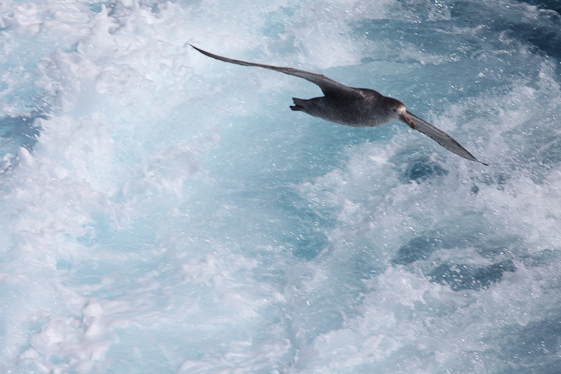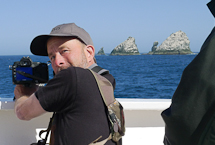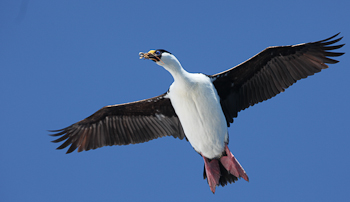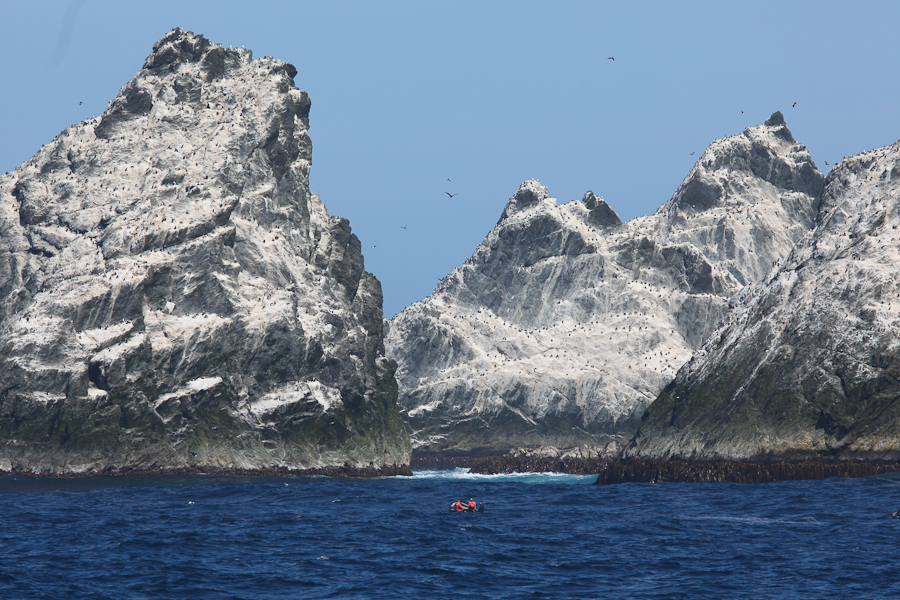
Our second day on the Scotia Sea continues fair and calm, and the weather forecast promises the same for our coming week in South Georgia. It is a relaxing interlude, with interesting lectures from the photographers and naturalists, with some time between those and the many excellent meals to catch up with our downloading and sorting of photographs. We have finished our initial pass through the pictures of the last two weeks – amazing to think that, on any previous trip, we would be home now; but instead, we have not even arrived at our primary destination.
We spend a lot of time on the bridge learning more about the seabirds. Richard has taught us to distinguish reliably between the Antarctic Prion, the Soft-plumaged Prion, and the Blue Petrel (and somewhat less reliably between various kinds of Storm Petrel); and we have seen a Royal Albatross, a couple of Grey-headed Albatross, in addition to the “ship associates” - Giant Petrels and Cape Petrels and such that always hang about ships for whatever reason, possibly to pick up food items churned up in the wake. We see the occasional dolphins riding the bow wave, and once in a while a whale spout.

We are now learning what to expect when we reach South Georgia Island, both what we will expect to see, and how we are expected to behave. There is a decontamination session this afternoon, to rid our gear of any foreign seeds or other biological contaminants that we might have picked up in the Falklands.
In the afternoon there was more excitement as we came to Shag Rock, the first land in 800 miles.

It is very much like the Farallones, although larger; jagged peaks rising in sheer cliffs out of the deep ocean, home to thousands of Blue-eyed Shags (also called the Antarctic Cormorant), and so covered with an ice cap of guano.

Our divers went out to explore the undersea world by the rocks; if it works, we will see their video tomorrow. [It didn't work -- nasty currents, no visibility. No video. We were lucky to get our divers back!]

The Shags and Wandering Albatross wheeled around the ship, providing convenient photo opportunities while we waited for our divers to return. A raft of Fur Seals floated by waving their flippers in the air (to cool off? The sun is very bright, although it is not actually warm). Some of them came to play in the bow wave like dolphins.
We had requested a tour of the engine room, which is not generally allowed, but we were pleased to find that they had arranged it. The chief engineer showed us and one other passenger around. It was hot, loud, and surprisingly small. The ship used to be a Norwegian ferry – it is mostly the hotel part that has been upgraded. It uses 20 tons of diesel fuel a day – which is an improvement over the older ships that use heavy fuel oil, much more polluting.
Tomorrow our adventure begins in earnest, as we make our first landfall on South Georgia, at King Haakon Bay, where Shackleton landed in his 22-foot lifeboat after making the 800-mile crossing from Elephant Island. (I'm glad our 800-mile crossing has been considerably more comfortable.)
We've been setting our clocks ahead an hour each night for the last three nights. The result of this is that the 7:00am wakeup call will be shortly followed by dawn at 7:10. We are now on a dawn-to-dusk schedule - ideal for photography.